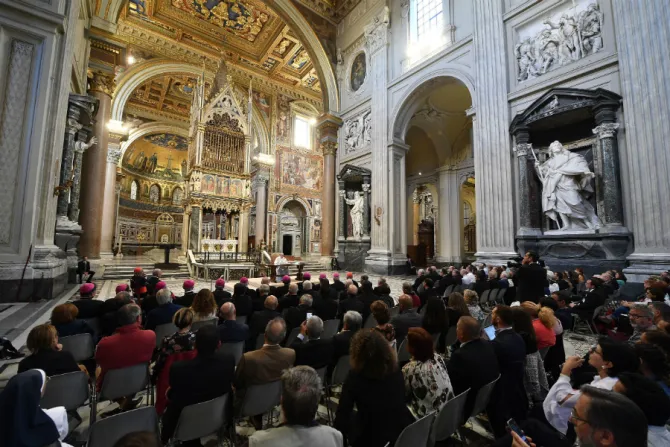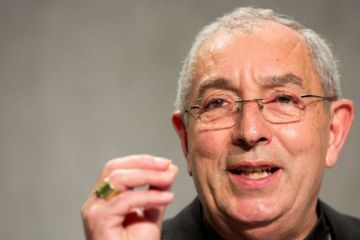Vatican City, Nov 9, 2024 / 04:00 am
The most important church in Rome, the Archbasilica of St. John Lateran, is celebrating its 1,700th anniversary on Nov. 9.
The church is the cathedral of the Diocese of Rome and the seat of the bishop of Rome, the pope. The adjoining palace served as the papal residence until the 14th century.
The anniversary of the dedication has been commemorated as a feast day by the whole Catholic Church since 1565 due to its importance as the “mother and head of all churches of the city and the world.”
A Latin inscription in the basilica proclaims this point in Latin: “Omnium ecclesiarum urbis et orbis mater et caput.”
“By honoring the basilica, one intends to express love and veneration for the Roman Church, which, as St. Ignatius of Antioch affirms, ‘presides over the charity’ of the entire Catholic communion,” Pope Benedict XVI said in 2008.
The Archbasilica of St. John Lateran was built after the promulgation of Emperor Constantine’s Edict of Milan, which in 313 granted Christians freedom to practice their religion.
Pope Sylvester I dedicated the archbasilica on Nov. 9 in the year 324. St. John the Baptist and St. John the Evangelist became the church’s patrons in the sixth century, but it is called St. John Lateran because it was built on property donated by the Plautii Laterani family during the Roman Empire.
The Diocese of Rome celebrated the 1,700th anniversary with a full year of special festivities, including concerts, Masses, and religious-cultural talks about the history of the archbasilica and the adjoining Lateran Palace.
The jubilee will conclude on Saturday with a Mass celebrated by the diocese’s new vicar general, Cardinal-designate Baldassare Reina.
In 2008, the now-deceased Pope Benedict XVI commented on the feast of the Dedication of Rome’s Lateran Basilica in his Sunday Angelus address.
The Emperor Constantine, Benedict XVI recalled, “gave Pope Miltiades the old property of the family of the Laterans and built the basilica, baptistery, and the residence of the bishop of Rome, where the popes lived until the Avignon period.”
Pope Benedict noted the importance of the material building in which communities gather to praise God, and said, “every community has the duty to guard with care its own sacred building, which constitutes a precious religious and historical patrimony.”
“Let us invoke the intercession of Most Holy Mary to help us become, like her, a ‘house of God,’ a living temple of love,” he said.






